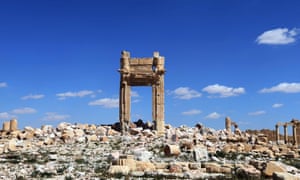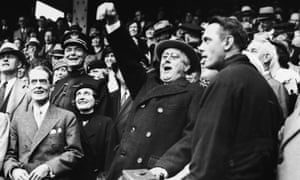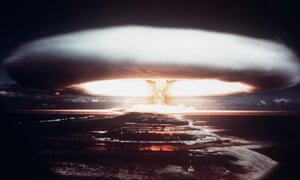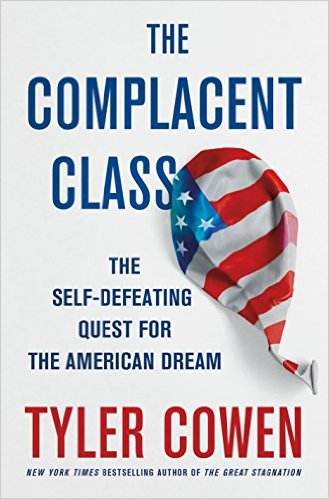
After my Texas-born wife and I moved to Michigan—an eleven-hour drive in the snow, during which time itself seemed to widen and flatten with the terrain—I found myself pressed into service as an expert on the region where I was born and where I have spent most of my life. “What is the Midwest like?” she asked. “Midwestern history, Midwestern customs, Midwestern cuisine?” I struggled to answer with anything more than clichés: bad weather, hard work, humble people. I knew these were inadequate. Connecticut winters and Arizona summers are also “bad”; the vast majority of humans have worked hard, or been worked hard, for all of recorded history; and humility is one of those words, like authenticity or (lately) resistance, that serves mainly to advertise the absence of the thing named.
I soon learned that I was hardly the only Midwesterner left tongue-tied by the Midwest. Articulate neighbors, friends, colleagues, and students, asked to describe their hometowns, replied with truisms that, put together, were also paradoxes: “Oh, it’s in the middle of nowhere.” “It’s just like anywhere, you know.” “We do the same things people do everywhere.” No-places are as old as Thomas More’s Utopia, but a no-place that is also everyplace and anyplace doesn’t really add up. Nor, at least in my experience, does one hear such language from people in other regions—from Southerners, Californians, Arubans, Yorkshiremen. Canadians live in a country that has been jokingly described as America’s Midwest writ larger—Canada and our Midwest share, among other things, manners, weather, topography, and a tendency among their inhabitants to downplay their own racism—yet they are hyperspecific in their language, assuming a knowledge of local landmarks that it never occurs to them non-Canadians may not possess. They assume that whatever their setting is, it is a setting, not, as Midwesterner-turned-expatriate Glenway Wescott once wrote of Wisconsin, “an abstract nowhere.”1
When pressed, a person might explain these tropes of featurelessness by pointing out the similarities imposed across the Midwestern landscape by capitalism. Boosters sometimes still call the region “America’s breadbasket,” and for much of the late nineteenth and twentieth centuries it was also, to a large degree, America’s foundry, and, during World War II, its armory.2 (Such is the extractive quality of Midwestern economic history that some historians have proposed that we take seriously the painter Grant Wood’s irritated description of the region, in his 1935 pamphlet Revolt against the City, as a colony of the East.)3 What all of this means in practice, of course, is vast visual repetition: mile upon mile of cornfields, block upon block of crumbling factories. (Willa Cather: “The only thing very noticeable about Nebraska was that it was still, all day long, Nebraska.”)4
But even used and battered landscapes have their particularity. Detroit’s blight isn’t Cleveland’s blight, any more than Manchester’s is Birmingham’s. Nor are any two cornfields truly exactly alike, despite Monsanto’s best efforts. The British cultural imagination has been formed by writers such as Thomas Hardy and D.H. Lawrence who are perfectly capable of distinguishing among bleaknesses; there’s no reason the American imagination should not pay the Midwest the same tribute. Especially in a period when some of the more interesting art and music consists of similar procedures repeated on a massive canvas, when cultured people are trained to find meaning in the tiny variations of a Philip Glass symphony or an early John Adams tape piece, you’d think we could learn to truly see Midwestern flatness as something richer than mindless repetition. (Willa Cather again: “No one who had not grown up in a little prairie town could know anything about it. It was a kind of freemasonry.”)5
Even if we insist, wrongly, on seeing the Midwest’s physical geography as featureless, there’s no reason to extend the mistake, as many even within the region do, to its cultural landscape. In a 2015 essay for Slate, “The Rust-Belt Theory of Low-Cost High Culture,” reporter Alec McGillis marveled at the cheapness—and, it seems, the mere presence—of good orchestra and museum tickets in interior cities:
The Cleveland Orchestra, one of the best in the world, offers a “young professional package,” with regular concerts and special events, for a mere $15 per month—$20 for a couple. When I visited the St. Louis Art Museum, a monumental building deep within verdant Forest Park, I was stunned by its wealth of German expressionists (it has the world’s largest collection of Max Beckmanns)—all for the entrance fee of $0. In Milwaukee, I spent hours with my laptop at the cafe in the art museum’s Calatrava-designed wing.… In Detroit, friends and I got a prime table at Baker’s Keyboard Lounge, its oldest jazz club, for a $10 cover.6
I appreciate McGillis’s enthusiasm, but why on earth was he so surprised? This is a part of the country where, the novelist Neal Stephenson observes, you can find small colleges “scattered about…at intervals of approximately one tank of gas.” Indeed, the grid-based zoning so often invoked to symbolize dullness actually attests to a love of education, he argues:
People who often fly between the East and West Coasts of the United States will be familiar with the region, stretching roughly from the Ohio to the Platte, that, except in anomalous non-flat areas, is spanned by a Cartesian grid of roads. They may not be aware that the spacing between roads is exactly one mile. Unless they have a serious interest in nineteenth-century Midwestern cartography, they can’t possibly be expected to know that when those grids were laid out, a schoolhouse was platted at every other road intersection. In this way it was assured that no child in the Midwest would ever live more than √2 miles [i.e., about 1.4 miles] from a place where he or she could be educated.7
Minnesota Danish farmers were into Kierkegaard long before the rest of the country.8 They were descended, perhaps, from the pioneers Meridel LeSueur describes in her social history North Star Country:
Simultaneously with building the sod shanties, breaking the prairie, schools were started, Athenaeums and debating and singing societies founded, poetry written and recited on winter evenings. The latest theories of the rights of man were discussed along with the making of a better breaking plow. Fourier, Marx, Rousseau, Darwin were discussed in covered wagons.9
If you’ve read Marilynne Robinson’s Gilead trilogy, you know that many of these schools were founded as centers of abolitionist resistance, or even as stops on the Underground Railroad.
When, looking in your own mind for a sense of your own experiences in a region, you find only clichés and evasions—well, that is a clue worth following. So I began, here and there, collecting tidbits, hoarding anecdotes, savoring every chance piece of evidence that the Midwest was a distinctive region with its own history. In doing so I noticed yet another paradox: If the Midwest is a particular place that instead thinks of itself as an anyplace or no-place, it is likewise both present and not present in the national conversation. The Midwest is, in fact, fairly frequently written about, but almost always in a way that weirdly disclaims the possibility that it has ever been written or thought about before. The trope of featurelessness is matched by a trope of neglect (for what can one do with what is featureless but neglect it?). Katy Rossing, a poet and essayist, has described the formula:
1. Begin with a loquacious description of the Euclidean-flat homogeneity of the landscape. This place looks boring. It looks like there’s nothing here worth thinking about. Example: “The sins of the Midwest: flatness, emptiness, a necessary acceptance of the familiar. Where is the romance in being buried alive? In growing old?” (Stewart O’Nan, Songs for the Missing)
2. In fact, it seems no one has really thought about it before, they all write. What IS the Midwest? The West, South, and East all have clear stories, stories that are told and retold in regionally interested textbooks, novels, movies. The Midwest? It’s a humorously ingenuous, blank foil for another region. Example: Fargo, Annie Hall.
3. But wait a minute, the writers tell you, it turns out this place isn’t empty at all! They spend the remainder of the article crouched in a defensive posture.10
Rossing misses one or two tricks—there must also be a resentful invocation of the term flyover country (“a stereotype,” as one lexicographer points out, “about other people’s stereotypes”).11 And one must end self-refutingly, by pointing out a number of example of Midwestern distinctiveness or high achievement, all of which—the frontier, Abraham Lincoln, populism, the Great Migration, Chicago, the growth and decline of manufacturing—are so thoroughly discussed as to bring the article’s initial premise into question.12 The density of these evocations of let’s-stop-ignoring-the-Midwest only increased after the 2016 election,13 as national newspapers, ignoring the dozens of articles they had already published on the region, pledged themselves to the Rust Belt as though to a strict Lenten discipline.14
Actually, there is no dearth of commentary upon the Midwest, once you begin to look for it. Historian and politico Jon Lauck points to the region’s rich historiographic tradition in The Lost Region; journals devoted to the region’s history and literature come and go (MidAmerica; Midwestern Gothic); the Society for the Study of Midwestern Literature sponsors superb, if frequently ignored, scholarship; regional independent presses win awards and capture attention (Coffee House, Greywolf, Dzanc, Belt, Two Dollar Radio); writers as major as Toni Morrison, Louise Erdrich, Marilynne Robinson, David Foster Wallace, and Richard Powers set book after book in the region. (Morrison in particular is so identified with the South—because, to be blunt, she’s black—that people forget she’s from Ohio. The Bluest Eye, Sula, and Beloved are set there, Song of Solomon in Michigan.) If you took English in high school, you read—or pretended you read—Cather, Scott Fitzgerald, Ernest Hemingway, Sherwood Anderson, Sandra Cisneros, and Theodore Dreiser, all of whom wrote of the region lovingly or ambivalently; if you took it in graduate school, you may also have read Wescott, William H. Gass, Saul Bellow, Jaimy Gordon, Dinaw Mengestu. The situation resembles nothing so much as the episode of the television show Louie in which the main character, stricken with guilt over his lapsed friendship with a less successful comedian, appears at the man’s house and demands a reunion, a reckoning; whereupon the old friend, after a meaningful silence, remarks that Louie has delivered the same speech twice before: He’d forgotten each time. Our reckoning with the Midwest is perpetually arriving, perpetually deferred.
Andrew R.L. Cayton, one of the foremost historians of the region, gives a partial explanation for this neurotic repetition: Much of the discourse about the Midwest is mentally filed under the heading “local,” not “regional.”
Historically, when people in the Midwest argue with each other over questions of identity, they fight over issues on universal, national, or local levels. They talk about what it means to be an American, a Lutheran, a farmer, a woman, a lesbian, a feminist, a black man; they almost never talk about what it means to be Midwestern, except in the most cursory fashion. In trying to locate a “heartland code,” one ethicist found that residents of the St. Louis area invoked generalities, such as “respect for family,” “respect for religion,” “respect for education,” “honesty,” “selflessness,” and “respect for the environment.” They rarely got more specific than that.… In virtually all the recent work on the Midwest, it remains a setting, not a particular constellation of attitudes or behaviors.15
We Midwesterners talk about ourselves, and we are talked about by others, but in terms either universal or local: Abe Lincoln of the log cabin, or Abe Lincoln of world history, but not, despite the movie, Abe Lincoln of Illinois, who was formed in part by that “great interior region” he lauded in his 1862 Annual Message to Congress.16 A Midwesterner may be a human, an American, a Detroiter, at most a Michigander, but a “Midwesterner” only when reminded of the fact. Cayton blames this lack of “regional consciousness” in part on geography: “Regional identity—the creation of an imagined community—requires a strong sense of isolation. And the Midwest is not, strictly speaking, isolated. It is in the middle.” More important, however, is the intensity of local attachment: “But it is less regional rootlessness than local rootedness that makes the construction of a regional identity so difficult in the Midwest.… Localism, this pride in family, town, and state, leaves little room for interest in a coherent regional identity. In general, Midwesterners want to be left alone in worlds of their own making.”17
Cayton’s last remark, in particular, throws light on the way the Midwest is often depicted in American art, and the way Midwestern artists tend to function. Think of Grant Wood’s farm couple, posted like sentries; of the intensely self-aware little Midwestern scenes that dot the landscape of American popular-music history like a series of private kingdoms: Motown in the ’60s, Ann Arbor–Detroit in the late ’60s and early ’70s, Cleveland in the mid-’70s, Minneapolis in the early ’80s. Think of Prince, who famously shot down Matt Damon’s attempt at conversation—“I hear you live in Minnesota”—with that wonderful remark, at once quintessentially Prince and quintessentially Midwestern: “I live inside my own heart, Matt Damon.”18 From Prince in his private Paisley Park kingdom in the middle of Minnesota; to Robert Pollard in Dayton, with his one-person record industry; to Bob Dylan, cloistered in his private languages and allegories; from William H. Gass’s novels and stories, walled and defended in purple prose and private grudges like old Michigan fort towns; to Marilynne Robinson’s elaborately homemade worlds and worldview; to Gwendolyn Brooks’s lifelong loyalty to Chicago, the Midwestern artist hunkers down on the landscape; she lives in her own heart. We remember her, then, as the artist of that patch of landscape, not as a “Midwestern artist.”
If it is not the Midwest that is missing from American history or culture, or even from the national conversation, but simply a Midwestern “regional consciousness,” as Cayton puts it, one naturally wonders whether such a category is important in the first place. Do Midwesterners need another “grid” (to borrow a term from the social critic George W.S. Trow) on which to plot their own lives? We already have families, towns and cities, a country, a species. Perhaps we are simply Americans, with no need for further differentiation.
It’s certainly tempting to think so—because this idea is actually the one that gives the Midwest its most persistent self-understanding, the frame in which we see ourselves and through which others see us. We think of ourselves as basic Americans, with no further qualification. “The West, South, and East all have clear stories,” as Katy Rossing puts it. But in the Midwest, we don’t. We’re free. And that is our story.
The authors of this story are not terribly hard to name. One of them is Lincoln, who, in his 1862 address to Congress having already labeled the Midwest the “great interior region,” went even further, commending it as “territorially speaking…the great body of the republic.”19 It’s a part of the country, but also, give or take, the country. Another author was Frederick Jackson Turner, whose The Frontier in American History (1920) characterizes the Middle West (as the slightly more dignified phrase of his day had it) as follows:
Both native settler and European immigrant saw in this free and competitive movement of the frontier the chance to break the bondage of social rank, and to rise to a higher plane of existence. The pioneer was passionately desirous to secure for himself and for his family a favorable place in the midst of these large and free but vanishing opportunities. It took a century for this society to fit itself into the conditions of the whole province.… Little by little, nature pressed into her mold the plastic pioneer life.… From this society, seated amidst a wealth of material advantages, and breeding individualism, energetic competition, inventiveness, and spaciousness of design, came the triumph of the strongest. The captains of industry arose and seized on nature’s gifts. Struggling with one another, increasing the scope of their ambitions as the largeness of the resources and the extent of the fields of activity revealed themselves, they were forced to accept the natural conditions of a province vast in area but simple in structure. Competition grew into consolidation.20
Turner’s Middle West is a sort of buffer zone between capitalism and the democracy of yeoman farmers, the straw mattress on which Hamilton lies down with Jefferson. “The task of the Middle West is that of adapting democracy to the vast economic organization of the present,” he writes.21 One might have thought this was everybody’s job. By tasking the Midwest in particular with the work all citizens of a developed democracy must do, Turner cannot help suggesting that the region is defined solely by a sort of extra degree of Americanness, by being American to the nth power. (Wescott again: “What seems local is national, what seems national is universal, what seems Middle Western is in the commonest way human.”)22 As the geographer James Shortridge puts it, “The Middle West came to symbolize the nation…to be seen as the most American part of America.”23 Nor is average Americanness quite the same as average Russianness or average Scandinavianness, for the United States has always understood itself, however self-flatteringly, as an experiment on behalf of humanity. Thus, Midwestern averageness, whatever form it may take, has consequences for the entire world; what we make here sets the world’s template. The historian Susan Gray has even detected echoes in Turner’s language of Lamarckian evolution, a theory dominant among biologists a century ago, when Turner was writing. The new characteristics that the “old” races of the world acquired in their struggle to build a world among the prairies and forests would create an actual new, American race.24
Small wonder, then, that Midwestern cities, institutions, and people show up again and again in the twentieth-century effort to determine what, in America, is normal. George Gallup was born in Iowa, began his career in Des Moines at Drake University, and worked for a time at Northwestern; Alfred Kinsey scandalized the country from—of all places—Bloomington, Indiana. Robert and Helen Lynd, setting out in the 1920s to study the “interwoven trends that are the life of a small American city,” did not even feel the need to defend the assumption that the chosen city “should, if possible, be in that common-denominator of America, the Middle West.” They chose Muncie, Indiana, and called it Middletown.25 We cannot be surprised that the filmgoers of Peoria became proverbial, or that newscasters are still coached to sound like they’re from Kansas.26 Nor that a recent defender of the region’s distinctiveness feels he must concede, in the same breath, that it “was always less distinctive than other regions,”27 or that a historian can call “ordinariness” the Midwest’s “historic burden.”28 If it is to serve as the epitome of America for Americans, and of humanity for the world, the place had better not be too distinctly anything. It has no features worth naming. It’s anywhere, and also nowhere.
What does it do to people to see themselves as normal? On the one hand, one might adopt a posture of vigilant defense, both internal and external, against anything that might detract from such a fully, finally achieved humanness. On the other hand, a person might feel intense alienation and disgust, which one might project inward—What is wrong with me?—or outward, in a kind of bomb-the-suburbs reflex. A third possibility—a simple, contented being normal—arises often in our culture’s fictions about the Midwest, both the stupid versions (the contented families of old sitcoms) and the more sophisticated ones (Fargo’s Marge Gunderson, that living argument for the value of banal goodness). I have yet to meet any real people who manage it. A species is a bounded set of variations on a template, not an achieved state of being.
I took the first option. As a child, I accepted without thinking that my small town, a city of 9,383 people, contained within it every possible human type; if I could not fit in here, I would not fit in anywhere. (“Fitting in” I defined as being occupied on Friday nights and, sooner or later, kissing a girl.) Every week that passed in which I did not meet these criteria—which was most of them—became a prophecy. Every perception, every idea, every opinion that I could not make immediately legible to my peers became proof of an almost metaphysical estrangement, an oceanic differentness that could not be changed and could not be borne. I would obsessively examine tiny failures of communication for days, always blaming myself. It never occurred to me that this problem might be accidental or temporary. I knew that cities existed, but they were all surely just Michigan farm towns joined together n number of times, depending on population. Owing to a basically phlegmatic temperament, and the fear of hurting my parents, I made it to college without committing suicide; there, the thing solved itself. But I worry what would have happened—what does often happen—to the kid like me, but with worse test scores, bad parents, an unlocked gun cabinet.
But I also worry about the people who can pass as Midwestern-normal. At its least toxic, this can lead to a kind of self-contempt: the nice, intelligent young women in my classes at the University of Michigan who describe themselves and their friends, with flat malice, as “basic bitches.” In artists, it can lead to self-destructive behavior, to the pursuit of danger in the belief that one’s actual experiences have furnished nothing in the way of material. It also leads us to one of the other great stereotypes of Midwesterners, one that I think has a little more truth to it than the nonsense about hard work and humility: We are repressed. Any emotion spiky or passionate enough to disrupt the smooth surface of normality must be shunted away. Garrison Keillor, and in some ways David Letterman, made careers from talking about this repression in a comic mode that both embodies it and transmutes it into art. The Minnesota writer Carol Bly finds it less amusing:
[In the Midwest] there is a restraint against feeling in general. There is a restraint against enthusiasm (“real nice” is the adjective—not “marvelous”); there is restraint in grief (“real sober” instead of “heartbroken”); and always, always, restraint in showing your feelings, lest someone be drawn closer to you.… When someone has stolen all four wheels off your car you say, “Oh, when I saw that car, with the wheels stripped off like that, I just thought ohhhhhhhh.”29
Critiques of emotional repression always risk imposing a single model for the Healthy Expression of the Emotions on a healthy range of variations. But anyone who has lived in the Midwest will recognize the mode Bly describes, and if you’ve lived there long enough, you’ll have seen some of the consequences she describes:
You repress your innate right to evaluate events and people, but…energy comes from making your own evaluations and then acting on them, so…therefore your natural energy must be replaced by indifferent violence.30
Donald Trump won the Midwestern states in part because he bothered to contest them at all, while his opponent did not. But we cannot forget the way he contested them: raucous rallies that promised, and in some views incited, random violence against a laundry list of enemies. Since his victory, the Three Percent Militia has become a recurring, and unwelcome, character in Michigan politics.
A regional identity built on its own denial, on the idea of an unqualified normality: This sounds, of course, like whiteness—a racial identity that consists only of the absence of certain kinds of oppression. (White people can, of course, be economically oppressed, though if the oppression goes on in one place long enough they tend to lose some of their whiteness, to be racialized as that Snopes branch of the human family, the white trash.) And here we hit upon the last major stereotype of the Midwest, its snowy-whiteness.
If the South depends on having black people to kick around, Midwestern whites often see people of color as ever new and out of place, decades after the Great Migration. The thinking goes like this: America is an experiment, carried out in its purest form here in the Midwest; people of color threaten the cohesion on which the whole experiment may depend. Thus, while Southern history yields story after story of the most savage, intimate racist violence—of men castrated and barbecued before smiling crowds, dressed as for a picnic—Midwestern history is a study in racial quarantine.31 Midwestern cities often dominate in rankings of the country’s most segregated. And though the region has seen its share of Klan activity and outright lynchings—I write this days after the acquittal of the St. Anthony, Minnesota, police officer who killed Philando Castile—the Midwest’s racism most frequently appears in the history books in the form of riots: Detroit, 1943; Cleveland, 1966; Milwaukee, Cincinnati, and Detroit again, 1967; Chicago, Cincinnati again, and Kansas City, 1968; Detroit again, 1975; Cincinnati again, 2001; Ferguson, 2014; Milwaukee again, 2016. A riot is, among other things, a refusal to be quarantined. And the Midwest quarantines its nonwhite immigrants, too—the people from Mexico and further south, from the hills of Laos or the highlands of Somalia, and from the Middle East, who commute from their heavily segregated neighborhoods to harvest the grain, empty the bedpans, and drive the snowplows. This is not to mention the people whose forced removal or confinement gave rise to the notion of the Midwest as an empty canvas in the first place. The twentieth-century history of racism in the Midwest is, on the whole, both a terrible betrayal of the abolitionist impulse that led to the settlement of so much of the region and a fulfillment of the violence inherent in the idea of “settling” what was already occupied.
Our bland, featureless Midwest—on some level, it is a fantasy. The easiest, most tempting tack for a cultural critic to take with fantasies is to condemn them. Given what ideas of normalness, in particular, have done to this country, to its nonwhite, nonstraight, non–middle-class, nonmale—and also to those who are all of those things, and are driven slightly or fully crazy by the effort to live up to the norm that is their birthright—it is tempting simply to try to fumigate the myth away.
Tempting, but probably not possible. As the English moral philosopher Mary Midgley argues, myths are “organic parts of our lives, cognitive and emotional habits, structures that shape our thinking.”32 Since thinking cannot be structureless, a frontal attack on one myth usually leaves us in a state of uncritical, unnamed acceptance of a new one. Self-conscious attempts to create new myths, meanwhile, are like constructed languages; they never quite lose their plastic smell. We should ask instead whether our story of the Midwest—this undifferentiated human place—contains any lovelier, more useful, or more radical possibilities. At the very least, we should try to name what there is in us for it to appeal to.
Marilynne Robinson’s Gilead trilogy has been read so often as to be reduced to a gingham study in Americana, and Robinson, a complex and in some ways cranky thinker, to “an Iowa abbess delivering profundities in humble dress.”33 This is a strange way to think about the story of a man dying before his son’s tenth birthday; of an emotionally distant drifter who fails at prostitution and eventually marries a pastor; of an Eisenhower Republican family that loses its chance at partial redemption because the kindly dad is a racist. If conflating Marilynne Robinson with cozy regionalists like Jan Karon gets more people to buy Robinson’s books, I suppose I can’t object too strenuously, but it may lead some readers to miss the strangeness of passages such as this one in Home (2008):
In college all of them had studied the putative effects of deracination, which were angst and anomie, those dull horrors of the modern world. They had been examined on the subject, had rehearsed bleak and portentous philosophies in term papers, and they had done it with the earnest suspension of doubt that afflicts the highly educable. And then their return to the pays natal, where the same old willows swept the same ragged lawns, where the same old prairie arose and bloomed as negligence permitted. Home. What kinder place could there be on earth, and why did it seem to them all like exile? Oh, to be passing anonymously through an impersonal landscape! Oh, not to know every stump and stone, not to remember how the fields of Queen Anne’s lace figured in the childish happiness they had offered to their father’s hopes, God bless him.… Strangers in some vast, cold city might notice the grief in her eyes, even remember it for an hour or two as they would a painting or a photograph, but they would not violate her anonymity.34
This passage offers a stunning inversion of the trope of featurelessness. While acknowledging that the place (in this case Gilead, Iowa) has a history (“the childish happiness they had offered to their father’s hopes”), Glory Boughton, the narrator, longs for the “anonymity” and “impersonal landscape” of a “vast, cold city” (Chicago, Minneapolis, Milwaukee). She longs for “deracination,” for the sense of being an anyone moving through an anyplace. Why should a person long for this? Anonymity is usually felt as a burden, and the sense that one is a mere “basic person” can imprison as much as it liberates.
Yet the passage resonates, because we humans need to feel that we are more than our communities, more than our histories, more even than ourselves. We need to feel this because it is true. The cultural conservative ideal, with its deeply rooted communities—an idea that finds a strange echo in the less nuanced kinds of identity politics—is a reduction as dangerous to human flourishing and self-understanding as is the reduction of the mind to the brain or the soul to the body. The “deeply rooted community” is, in reality, at least as often as not, a cesspit of nasty gossips, an echo chamber in which minor misunderstandings amplify until they prevent people from seeing each other accurately, or at all. As for the identities that drive so much of our politics, they are a necessary part of the naming and dismantling of specific kinds of oppression—but we’ve all met people for whom they become a cul-de-sac, people who ration their sympathy into smaller and smaller tranches of shared similarity until they begin to resemble crabbed white men. Moral imaginations, like economies, tend to shrink under an austerity regime.
Every human is a vast set of unexpressed possibilities. And I never feel this to be truer than when I drive through the Midwest, looking at all the towns that could, on paper, have been my town, all the lives that, on paper, could have been my life. The factories are shuttered, the climate is changing, the towns are dying. My freedom so to drive is afforded, in part, by my whiteness. I know all this, and when I drive, now, and look at those towns, those lives, I try to maintain a kind of double consciousness, or double vision—the Midwest as an America not yet achieved; the Midwest as an America soaked in the same old American sins. But I cannot convince myself that the promise the place still seems to hold, the promise of flatness, of the freedom of anonymity, of being anywhere and nowhere at once, is a lie all the way through. Instead, I find myself daydreaming—there is no sky so conducive to daydreaming—of a Midwest that makes, and keeps, these promises to everybody.
And then I arrive at the house that, out of all these little houses, by some inconceivable coincidence, happens to be mine. I park the car. I check the mail. I pet the cat. I ready myself for bed. I can’t stay up too late. Between the Midwest that exists and the other Midwest, the utopic no-place that I dream of, is hard work enough for a life.
ENDNOTES
Glenway Wescott, Good-Bye, Wisconsin (New York, NY: Harper, 1928), 39. Quoted in Richard Nelson Current, Wisconsin: A History (Urbana, IL: University of Illinois Press, 2001), 161.
See C.K. Hyde, Arsenal of Democracy: The American Automobile Industry in World War II (Detroit, MI: Wayne State University Press, 2013).
Edward Watts, An American Colony: Regionalism and the Roots of Midwestern Culture (Athens, OH: Ohio University Press, 2001), xii. See also Watts’s “The Midwest as a Colony: Transnational Regionalism,” in Regionalism and the Humanities, ed. Timothy Mahoney and Wendy J. Katz (Omaha, NE: University of Nebraska Press, 2009), 166–89.
Willa Cather, My Ántonia (Boston, MA: Houghton Mifflin, 1954), 5. First published 1918.
Ibid., 1.
Alec McGillis, “The Rust-Belt Theory of Low-Cost Culture,” Slate, January 1, 2015, http://www.slate.com/articles/arts/culturebox/2015/01/cheap_high_culture_in_baltimore_buffalo_detroit_and_other_midsize_cities.html.
Neal Stephenson, “Everything and More Foreword,” in Some Remarks (New York, NY: HarperCollins, 2012), 273.
See Thomas Wetzel, “A Graveyard of the Midwest,” MidAmerica 26 (1999): 10–24.
Meridel LeSueur, Ripening: Selected Work, 1927–1980 (Old Westbury, NY: Feminist Press, 1982), 36.
Katy Rossing, “Smothered: American Nostalgia and the Small Wisconsin Town,” Hypocrite Reader, January 2012, http://hypocritereader.com/12/smothered-american-nostalgia.
This supposed pejorative appears to have been popularized by Midwesterners reacting defensively to the region’s supposed unpopularity in the coastal mind. See Gabe Bullard, “The Surprising Origin of the Phrase ‘Flyover Country,’” National Geographic, March 14, 2016, http://news.nationalgeographic.com/2016/03/160314-flyover-country-origin-language-midwest.
For two examples, see Matthew Wolfson, “The Midwest Is Not Flyover Country,” The New Republic, March 22, 2014, https://newrepublic.com/article/117113/midwest-not-flyover-country-its-not-heartland-either, and Michael Dirda’s review of Jon Lauck’s The Lost Region, Washington Post, February 4, 2014, https://www.washingtonpost.com/entertainment/books/the-lost-region-toward-a-revival-of-midwestern-history-by-jon-k-lauck/2014/02/05/55e90e08-8a90-11e3-833c-33098f9e5267_story.html?utm_term=.62c430eef907. Alternatively, one might simply Google the phrase “Not just flyover country.”
Eric Schulzke, “The One County That Tipped Michigan to Trump,” Deseret News, November 16, 2016, http://www.deseretnews.com/article/865667328/The-one-county-that-tipped-Michigan-to-Trump-and-why-ignoring-it-is-not-an-option.html.
See Anne Trubek, “The Media Didn’t Forget the Rust Belt—You Did,” Refinery29, November 17, 2016, http://www.refinery29.com/2016/11/130147/rust-belt-trump-voters-election-media-issues.
Andrew R.L. Cayton, “The Anti-Region,” in Cayton and Susan E. Gray, The American Midwest: Essays on Regional History (Bloomington, IN: Indiana University Press, 2001), 148.
Abraham Lincoln, “Second Annual Message to Congress,” in Lincoln: Political Writings and Speeches, ed. Terence Ball (New York, NY: Cambridge University Press, 2013), 157.
Ibid., 149, 150.
Kenzie Bryant, “Prince Had No Time for Matt Damon’s Small Talk,” Vanity Fair, July 18, 2016, http://www.vanityfair.com/style/2016/07/matt-damon-prince-small-talk.
Lincoln’s delimitation of a “great interior region”—“bounded east by the Alleghenies, north by the British dominions, west by the Rocky Mountains, and south by the line along which the culture of corn and cotton meets”—doesn’t exactly conform to the US Census Bureau’s definition of the Midwest, nor to any of a half-dozen other common definitions. (Lincoln, “Second Annual Message,” www.presidency.ucsb.edu/ws/?pid=29503.) Referring to the West, which at that time included Michigan, the nineteenth-century novelist Caroline Kirkland wrote, “How much does that expression mean to include? I never have been able to discover its limits.” Me neither. (Kirkland is quoted in Edwin S. Fussell, Frontier in American Literature [Princeton, NJ: Princeton University Press, 1954], 3.)
Frederick Jackson Turner, The Frontier in American History (New York, NY: Holt, 1950), 154. First published 1920.
Ibid., 155.
Quoted in Ronald Weber, The Midwestern Ascendancy in American Writing (Bloomington, IN: Indiana University Press, 1992), 7.
James Shortridge, The Middle West (Lawrence, KS: University of Kansas Press, 1989), 33.
Susan E. Gray, “Stories Written in the Blood: Race and Midwestern History,” in Cayton and Gray, The American Midwest, 127.
Robert S. Lynd and Helen Merrell Lynd, Middletown: A Study in American Culture (New York, NY: Harcourt, Brace, 1959), 7–8. First published 1929. The identification of Middletown and Muncie is attested in a number of places; see the chapter on Middletown in Sarah E. Igo, The Averaged American: Surveys, Citizens, and the Making of a Mass Public (Cambridge, MA: Harvard University Press, 2008).
See Edward McClelland’s delightful How to Speak Midwestern (Cleveland, OH: Belt Publishing, 2016), 9–10.
Wolfson, “The Midwest Is Not Flyover Country.”
Nicole Etcheson, “Barbecued Kentuckians and Six-Foot Texas Rangers: The Construction of Midwestern Identity,” in Gray and Cayton, The American Midwest, 78.
Carol Bly, “From the Lost Swede Towns,” in Letters from the Country (New York, NY: Harper and Row, 1981), 4.
Ibid., 5–6.
I mean this more or less literally. The book exists; see Thomas J. Sugrue, The Origins of the Urban Crisis (Princeton, NJ: Princeton University Press, 1997).
Mary Midgley, Myths We Live By (London, England: Routledge Classics, 2014), 7.
Mark Athitakis, The (New) Midwest (Cleveland, OH: Belt Publishing, 2017), 9.
Marilynne Robinson, Home (New York, NY: Farrar, Straus and Giroux, 2008), 282.















 Image Credit: (
Image Credit: (

